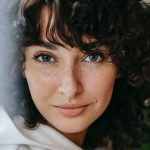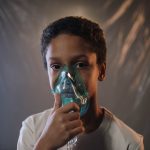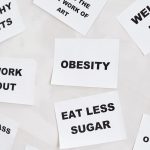How well did you sleep last night? This might be a better greeting than “How are you?” since one’s quality of sleep answers this question with greater precision anyways. The sleep statistics invariably show that sleep, which should take up a third of our time, is increasingly taking up only a fourth of our day.
Nowadays, as the sleep-deprivation epidemic worsens, sufficient sleep is a luxury that few of us can afford given our massive workloads, not to mention the environmental stressors most of us face. So what are we risking? The following sleep figures and facts will give you your answer.
The Top 10 Sleep Stats, Figures & Facts
- Fitness is the first and sleep is the fourth priority for Americans.
- 37% of Americans older than 40 wake up because of stress and worrying.
- Sleep-deprived children can’t fully regulate their emotions and behavior.
- More academic degrees equal more sleeping pills.
- 5 hours and 59 minutes is the average night’s sleep for the Japanese.
- Antidepressant medications can disturb your sleep.
- 31% of British pilot pairs experienced synchronized sleep.
- Excessive daytime sleepiness (EDS) has been linked to Alzheimer’s.
- CBD reduces the frequency of nightmares.
- Cannabidiol regulates unhealthy emotional responses.
Surprising US Sleep Facts & Figures
1. 38% of children under 2 use a mobile device, which has been proven to negatively impact their sleep.
(NCBI)
Around 50% of parents of toddlers and preschoolers think that watching videos helps when putting their children down to sleep. However, a 2016 study shows that 28% of school-aged children and 57% of teenagers who leave an electronic device on in their bedroom after bedtime obtained less total sleep and had a lower sleep quality. Worse, using a smartphone before sleep can lead to insomnia, nightmares, and daytime drowsiness.
2. For Americans, fitness is most people’s top priority, and sleep is the fourth.
(Statista)
A 2018 survey revealed that only 10% of Americans prioritize sleep over work, hobbies, fitness, and social life. The results revealed that a staggering 35% are more concerned about their nutrition and fitness than their rest. Work and hobbies come before sleep for 27% and 17% of US adults, respectively.
3. 28%–37% of American adults get 6 hours of sleep or less.
(NCBI)
American sleep statistics show that a third of American adults are sleep deprived, while approximately 8% oversleep. Poor sleep quality is a major risk factor for several health conditions, including high blood pressure, diabetes, stroke, obesity, depression, and heart disease—thus resulting in increased mortality rates. Metabolic disturbances and cardiovascular diseases have a three times greater prevalence in people who lack quality sleep.
4. In the US, 4.1% of those age 20 and up use prescription sleep aids.
(Statista)
Middle-aged Americans (50–59 years) are the most frequent users of sleep aids after the 80+ population. Younger Americans (20–39) are the least likely to use prescription medication to treat a sleep disorder. Sleep statistics from 2019 show an increase in the consumption of sleep medication. According to the CDC, 1 in 25 Americans (5 million people) use it regularly.
5. The narcolepsy medication Xyrem has grown in price by 841% since 2007.
(Business Insider, UpToDate, Statista)
Narcolepsy is a devastating sleep disorder affecting approximately 1 in 2,000 people. In narcoleptics, the sleep-wake state is blurred, so sufferers can experience temporary paralysis and hallucinations among other symptoms. As the number of newly diagnosed patients grows, the narcolepsy market is expected to grow more than twice in size by 2027 ($4.5 billion).
6. 37% of Americans older than 39 can’t maintain sleep because of stress and worry.
(Statista)
More than a third of Americans over 39 have trouble sleeping, statistics show, because they can’t set their worries aside. Worrying is the most common psychological reason for waking up at night, and it keeps 7% of the US population awake on a regular basis. For comparison, physical discomfort involving pain accounts for 20% of cases of restlessness.
7. More academic degrees mean more sleeping pills.
(LA Times)
Well-educated people are more likely to use prescribed medication to aid their sleep (4.4%). Comparatively, 3.9% of those who had only a high school diploma take sleep medication, and 3% of people who didn’t finish high school do so.
8. Half of African Americans have poor quality sleep.
(NCBI)
Recent sleep studies show that 35%–53% of non-Hispanic African Americans sleep 6 hours or less, and around 10% of them sleep for 9 hours or more. Different studies indicate that African Americans have poorer sleep quality and a higher prevalence of sleep-disordered breathing when compared to non-Hispanic whites. A major reason for this racial disparity is believed to be the low socioeconomic position (SEP) that exposes them to pollution, unsafe conditions, and noise.
Sleep Deprivation
9. Sleep-deprived children struggle to regulate their emotions and behavior.
(NCBI)
The recommended sleep needs by age given by the NSF and AASM state that children up to 5 years old need 10–13 hours of sleep, school-aged children up to 13 years need 9–11 hours, and teenagers up to 17 years need 8–10 hours of sleep.
Failing to meet these sleep requirements—especially in young children and toddlers—results in repercussions such as behavior and emotional problems in adolescence. Adolescents that are sleep deprived will have bigger problems controlling their mood, behavior, and emotions.
10. 30% of children get insufficient sleep due to screen exposure.
(NCBI)
Recent studies investigating the relationship between technology and sleep reveal that 30% of children and adolescents aged 0–18 suffer from sleep deprivation from using technology. 90% of the studies on this subject found an association between screen media use and a delayed bedtime, decreased total sleep time, or both. The results also show that screen time induced physiological alertness and restlessness, especially in younger children.
11. Women need 20 minutes more sleep than men.
(Independent)
Recent popular research claims that women need to sleep more to recover from the multitasking they do on a daily basis. However, additional sleep facts show that many women are sleep-deprived due to shifts in hormones such as pregnancy, menopause, and PMS, among other factors. The consequences of poor sleep for women are very concerning because they include loss of fertility, among other comorbid disorders.
12. Sleep deprivation can lead to uncontrollable anger.
(NCBI)
Sleep deprivation can keep the amygdala from functioning properly—this is the brain region responsible for experiencing emotions. In sleep-deprived people, the connection between the amygdala and the center for emotional regulation is temporarily impaired, leading to emotional overreactions involving anger, depression, hostility, confusion, and anxiety.
13. 5 hours and 59 minutes—that’s an average night’s sleep in Japan.
(Dreams.co.uk)
Following sleep statistics worldwide, Japan has the shortest average sleep duration per workday. Saudi Arabia and Sweden are next. Meanwhile, New Zealand has the longest, averaging 7 hours and 30 minutes of sleep. Japanese and other Asian cultures embrace napping in the workplace and in that way to compensate for the lack of sleep. Nonetheless, sleep deprivation is an indisputable global epidemic.
14. 60% of Spaniards never have a siesta, and 6.4% have insomnia.
(The Guardian, BBC, NCBI)
The myth that the Spanish sleep more than others is officially busted. A recent study shows that only 18% of Spaniards have an occasional midday nap. Furthermore, European sleep statistics show that Spaniards sleep an hour less than the European average. They typically work 11-hour days, which puts them at high risk for sleep deprivation—even more so because they don’t go to bed until midnight.
15. If lost sleep were treated the same as alcohol intake, surgeons would essentially always be drunk.
(NCBI)
Surgical subspecialists in the US work 60–90 hours per week, sometimes even up to 120 hours, and are chronically sleep deprived. In a study having surgeons take the Multiple Sleep Latency Test, a standard test for daytime sleepiness, 68% of them drifted off into a micro-sleep due to lack of sleep, statistics from the study show.
So, if 2 hours less sleep were equivalent to a 0.04% blood-alcohol concentration and 4 hours to 0.08%, they’d be legally drunk in every state. Since fatigue affects performance, this raises concerns about the annual 44,000–98,000 deaths attributed to medical error.
16. Synchronous sleep occurred among 31% of British pilot pairs.
(BBC)
A survey conducted by the British Airline Pilots Association showed that an “impressive” 43% of pilots involuntarily fell asleep during flights, and 31% of them confirmed that their copilot was also asleep. Nowadays, aviation accidents are rare, but still, those that do happen are due to human error 80% of the time, like poor judgment and slow reactions. The sleep deprivation statistics show that drowsiness was found to be the direct cause of 15%–20% of accidents involving human error.
17. Severe sleep deprivation has been connected to the Challenger explosion.
(NASA)
The subcommittee formed to investigate the space shuttle’s explosion, a major historic event that cost the lives of seven astronauts, noted that the excessive working hours of NASA’s management team jeopardized their judgment. In a fatigued state, wakefulness becomes unstable, which in turn, impairs cognitive performance, as pointed out by nearly all sleep deprivation statistics.
18. In the US, 2.3% of the annual GDP is lost to absenteeism caused by sleep deprivation.
(Fortune)
An estimated 1.2 million workdays are missed due to sleep deprivation in the US annually. Speaking in numbers, this is equal to $411 billion. Just for comparison, in Germany, over $60 billion annually is lost due to sleep deprivation, or 1.56% of Germany’s GDP.
Sleep-Related Disorders
19. Insomniacs have a 20% greater chance of developing major depression.
(NCBI, NCBI)
A recent study reveals that 40% of insomnia patients and 46.5% of people with hypersomnia have a psychiatric disorder—most frequently, this is major depressive disorder. Mental health statistics and insomnia statistics show that insomnia and depression have a bidirectional correlation. Patients with other mood disorders also report having insomnia (40%) or other co-occurring depression symptoms (22%).
20. Treating sleep disorders can help depression and bipolar disorder symptoms.
(NCBI)
77% of bipolar patients experience sleep disturbances prior to manic episodes, and 24% experience disturbances prior to depressive ones. Research shows that treatments helping regulate sleep may reduce BD relapses. Furthermore, insomnia is the most common residual symptom of remission from depression, present in 44%–51% of treated patients, as revealed in the insomnia statistics. Since patients whose insomnia persists are 3–6 times more likely to relapse than patients who are in full remission, targeting insomnia can help treat depression as well.
21. Antidepressant medications can disturb your sleep.
(NCBI)
People taking all types of norepinephrine and dopamine reuptake inhibitors or selective serotonin reuptake inhibitors have a three times greater chance of developing insomnia or other sleep disturbances. Many antidepressants can also induce or aggravate restless legs syndrome.
22. 21% of Lunesta users experience headache.
(Statista)
There are multiple side effects of sleeping pills. In a 2012 study in the US, Americans reported several side effects of two insomnia medications, Ambien and Lunesta. Sleep stats revealed that the most common side effects of Lunesta include unpleasant taste, with 17% experiencing this, drowsiness at 10%, and nausea at 5%.
23. 1% of young adults have lifelong idiopathic insomnia.
(The Good Body, Sleep Foundation)
There are multiple chronic diseases apart from mental health conditions that can cause so-called secondary insomnia. These include chronic pain, acid reflux, hypothyroidism and hyperthyroidism, and many more. In some cases, insomnia is idiopathic and can’t be explained by other present causes. The prevalence of lifelong idiopathic insomnia is approximately 7% in adolescents and 1% in young adults, as noted in the sleep statistics from 2018.
24. In the US, 10%–15% of chronic insomnia is due to substance use.
(NCBI, Medical News Today)
Keep in mind, 70% of adult Americans consume alcohol, and half of them experience alcohol dependence at some point. Up to 72% of patients in treatment for alcohol abuse report having insomnia. New studies show that as little as one drink impairs sleep quality. High alcohol intake can reduce a person’s quality of sleep by over 39%.
25. Excessive daytime sleepiness (EDS) can be linked to Alzheimer’s.
(Science Daily)
Alzheimer’s disease affects 5.7 million Americans, with early signs so discreet they’re easily overlooked. One of the symptoms is often changes in sleeping habits. The brain alterations typical for Alzheimer’s disease present themselves as poor sleep quality, daytime drowsiness, and hypersomnia in the early stages. Researchers found that Alzheimer’s can be diagnosed through sleep monitoring, which is a cheaper alternative to most methods.
Cannabinoids and Sleep
(NCBI)
CBD has a confirmed effect in stabilizing the blood pressure peaks related to stress response and promotes sleep. A recent study examining anxiety scores across 72 patients concluded that CBD significantly decreased anxiety responses in 79.2% of the study group. Additionally, the data showed improved sleep scores within the first month for 66.7% of the patients.
27. Dronabinol improves sleep quality in sleep apnea, statistics show.
(NCBI)
An exploratory study shows that the cannabinoid dronabinol positively influences the EEG measurements in individuals with sleep apnea (OSA). The results show that with the use of dronabinol, delta and theta frequencies are more powerful, and there’s a strengthening of ultradian rhythms in the sleep EEG patterns. This means that the quality of sleep in OSA patients improved, and their daytime drowsiness diminished after taking oral dronabinol, even when the time spent asleep stayed the same.
28. THC prevents glaucoma in hypersomniacs.
(AAO, NCBI)
Sleep stats from a three-year study show that people who sleep for 10 hours or more per day are three times more likely to develop glaucoma-related optic nerve damage than those who sleep seven hours per night. Luckily, the THC found in cannabis has a well-earned 50-year reputation of lowering ocular pressure, helping many glaucoma patients.
29. Cannabidiol regulates emotional response.
(NCBI, NCBI)
Sleep deprivation leads to the dysregulation of emotions, especially in adolescents. In a 2017 study, CBD reduced the inappropriate responses to stress and fear and, in that way, improved the behavioral manifestations of depression and anxiety.
The sleep statistics following several neuroimaging studies revealed that cannabidiol decreases the activation of brain regions associated with anxiety and emotional processing of fear.
30. CBD can be a side-effect-free depression treatment.
(NCBI)
Similar to classical antidepressants, CBD reduces depressive symptoms by stimulating hippocampal neurogenesis. This is backed up with animal studies that demonstrate a clear reduction in depressive and anxiety-like behaviors in mice. Furthermore, CBD doesn’t have the sleep-altering effect present in other antidepressants. Instead, as the sleep statistics show, it promotes sleep while improving mood at the same time.
31. CBD reduces the frequency of nightmares.
(NCBI, UpToDate)
Between 2% and 6% of adults and over 20% of children in the US suffer from weekly recurring nightmares. Nightmares are a form of abnormally persistent emotional memories, which can also be present in people with PTSD. CBD consumption diminishes the innate responses to threats, positively affecting fear-memory processing. Additionally, CBD has been proven to modify learned emotional responses in patients with phobias or PTSD. As a result, it helps reduce nightmares.
FAQ
How many sleeping disorders are there?
Since 2014, the International Classification of Sleep Disorders (ICSD) has counted 83 sleep disorders. These are divided into seven main categories: insomnia, sleep-related breathing disorders, central disorders of hypersomnolence, circadian rhythm sleep-wake disorders, parasomnias, sleep-related movement disorders, and other sleep disorders.
What is the most common sleep disorder?
Insomnia is the most common sleep disorder, affecting up to 20% of the population in Western countries. Other common sleep disorders are snoring, sleep apnea, sleep hypoventilation, and restless legs syndrome.
How many people suffer from insomnia?
Indications show that the diagnosis of insomnia is not very well documented in every part of the world. At minimum, 130 million people suffer from insomnia worldwide. However, most research places the overall prevalence at an estimated 10%–18% of the global population.
How common is sleep deprivation?
Sleep deprivation affects almost half of adolescents and half of the working population worldwide. It isn’t a specific sleep disorder—instead, this refers to the lack of sleep caused by poor sleep hygiene. For most adults, the amount of sleep needed to maintain good health is seven to eight hours each night.
How many people have sleep disorders?
A third of the global population claim they experience insomnia, but only 6% to 15% meet the clinical criteria. In addition, 2%–4% of the global population has sleep apnea, and up to 19% has restless legs syndrome. In the US, an estimated 10 million people consult health care professionals for a sleep disorder.
How much sleep does the average American get?
In the United States, people sleep an average of 6.8 hours a night. In fact, an estimated 83.6 million American adults reported that they’re sleeping less than 7 hours a day.
Conclusion
Human physiology knows no shortcuts when it comes to wellbeing and performance, and good sleep takes at least seven hours. Sleep deprivation can cause us and others harm in more than one way. So if we don’t want to potentially induce a chronic disease or crash a vehicle, we need to keep a vigilant eye out for the signs of a sleep disorder.
Sleep statistics show that global awareness needs to be stirred and better sleep hygiene adopted in order to treat this silent health menace. Happily, using natural medications such as cannabidiol can help us find our dreams at night and also make them come true during the day.
Sources:
- AAO
- BBC
- BBC
- Business Insider
- Columbia Neurology
- Dreams.co.uk
- Elsevier
- Fortune
- Independent
- LA Times
- Medical News Today
- NASA
- NCBI
- NCBI
- NCBI
- NCBI
- NCBI
- NCBI
- NCBI
- NCBI
- NCBI
- NCBI
- NCBI
- NCBI
- NCBI
- NCBI
- Science Daily
- Sleep Foundation
- Sleep Medicine Research
- Statista
- Statista
- Statista
- Statista
- Statista
- The Good Body
- The Guardian
- UpToDate
- UpToDate



